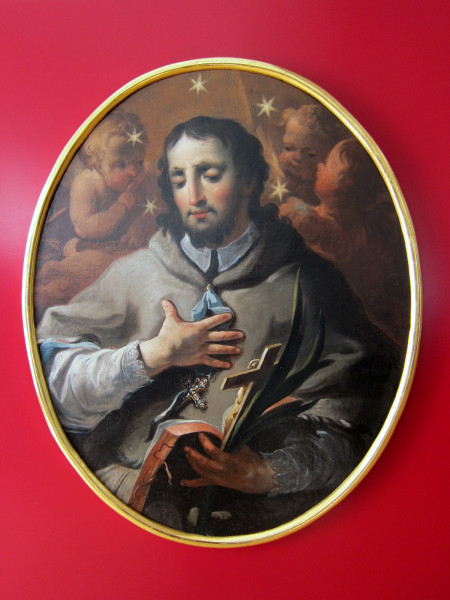More than a thousand years ago the first monastery cell was built on the Georgenberg. In 1138 the community was raised to the status of a Benedictine abbey. After the last fire in 1705, the monastic community decided to move its abbey to Fiecht in the Inn valley below the mountain monastery. The monastery with its magnificent baroque collegiate church is one of the most valuable cultural sites in Tyrol.
The Georgenberg, original monastery of the Fiecht Benedictine monks, is still a famous place of pilgrimage today.
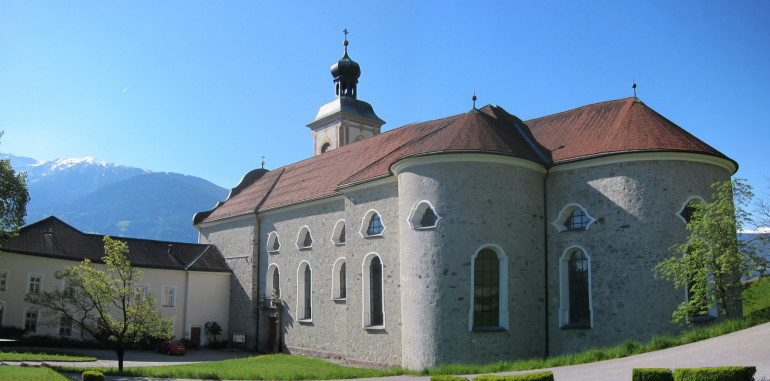
Collegiate church St. Josef in Fiecht
In 1741 the construction of the collegiate church of St. Joseph was begun, although the monks had been living in the new monastery at Fiecht since 1708.
The architecture of the church was designed by Jakob Singer. A striking feature is the quarry stone work which is unplastered on the outside.
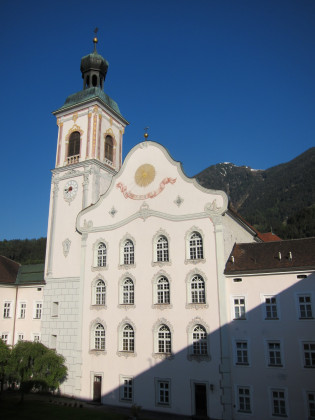
The church seen from the monastery courtyard

The interior of the abbey church Fiecht captivates by its height and brightness and the many furnishings in southern German baroque. The floor plan is a Latin cross. In the centre at the altar is St. Joseph, to whom the church is consecrated. Below it the nine choirs of angels are depicted.

The baroque organ with a long history of suffering was restored by the Swiss company Mathis between 1998 and 2000.
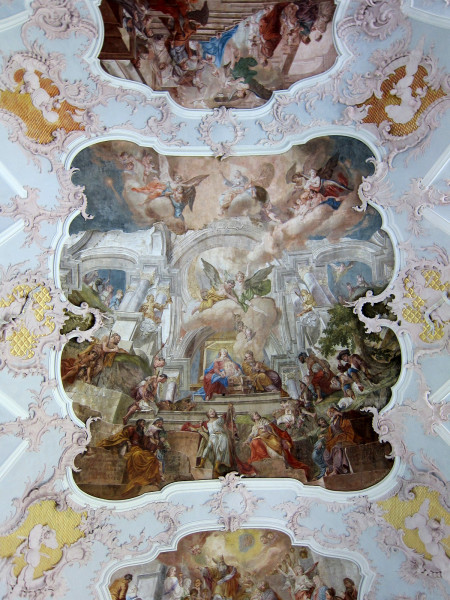
The ceiling fresco is by Matthäus Günther, a Bavarian painter of the baroque and rococo period. It depicts the life of St. Joseph.

The Madonna on the crescent moon originally stood on the Annasäule in Innsbruck and was transferred to Fiecht on permanent loan. Sculptor: Christoph Benedetti
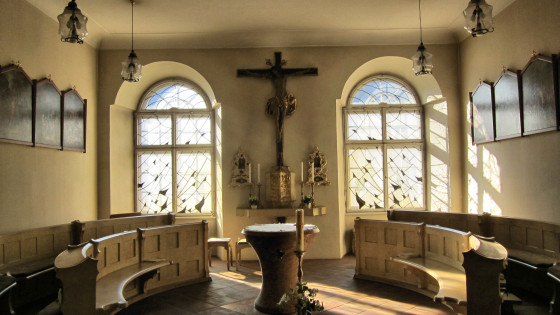
In the choir chapel behind the church the monks meet for prayer. Guests are welcome.
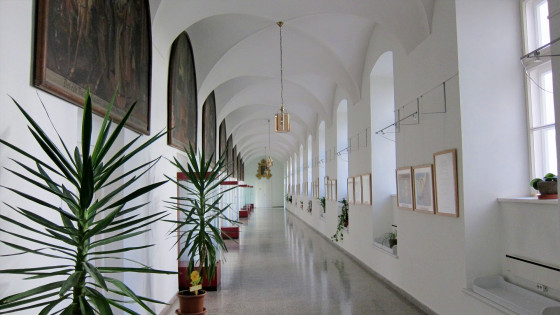
Around the inner courtyard there is a passageway. Here we go to the dining room.
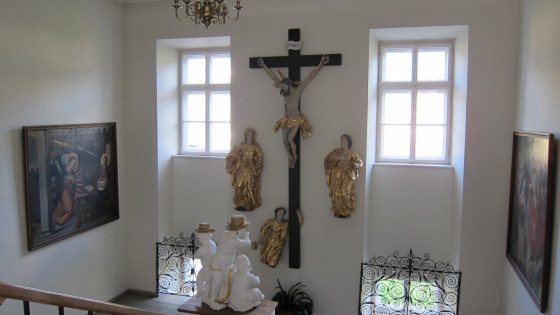
The staircase leads to the guest rooms.
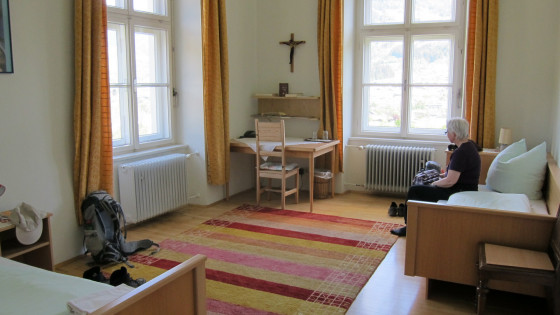
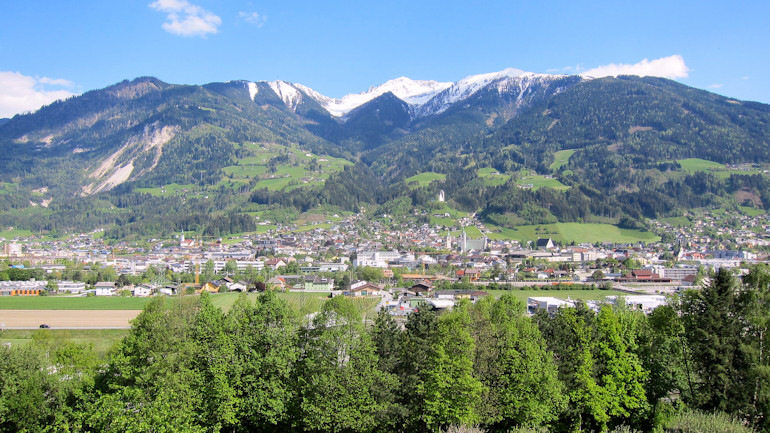
![]()
This is where we spent the night. Admire the fantastic view taken from the right window.
A short tour of the museum

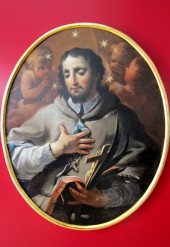
My heart of a Nepomuk collector rejoices over this saint in the museum.
This is what St. Georgenberg might have looked like in the early 17th century.
There are still many great treasures that could be shown here, but take a look for yourself! Fiecht is worth a visit.
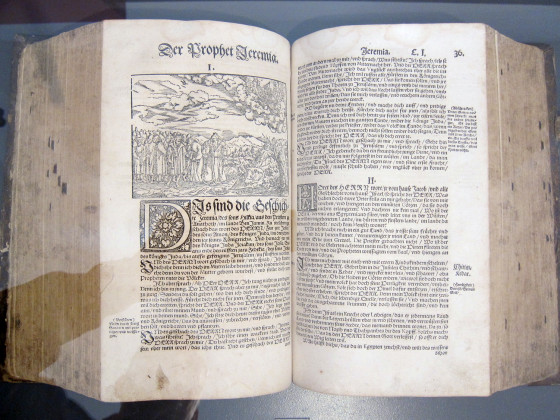
This here is an original Luther Bible!
